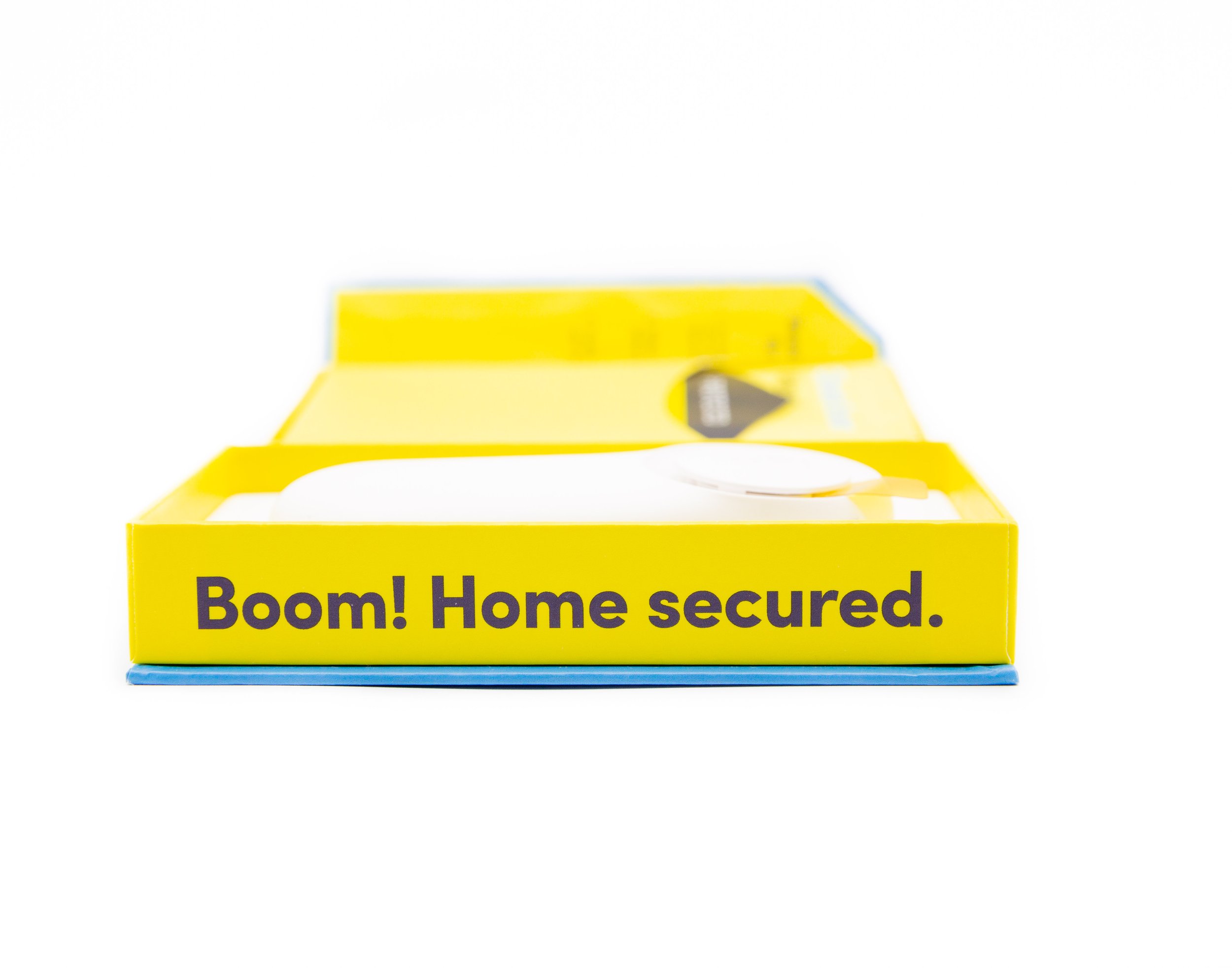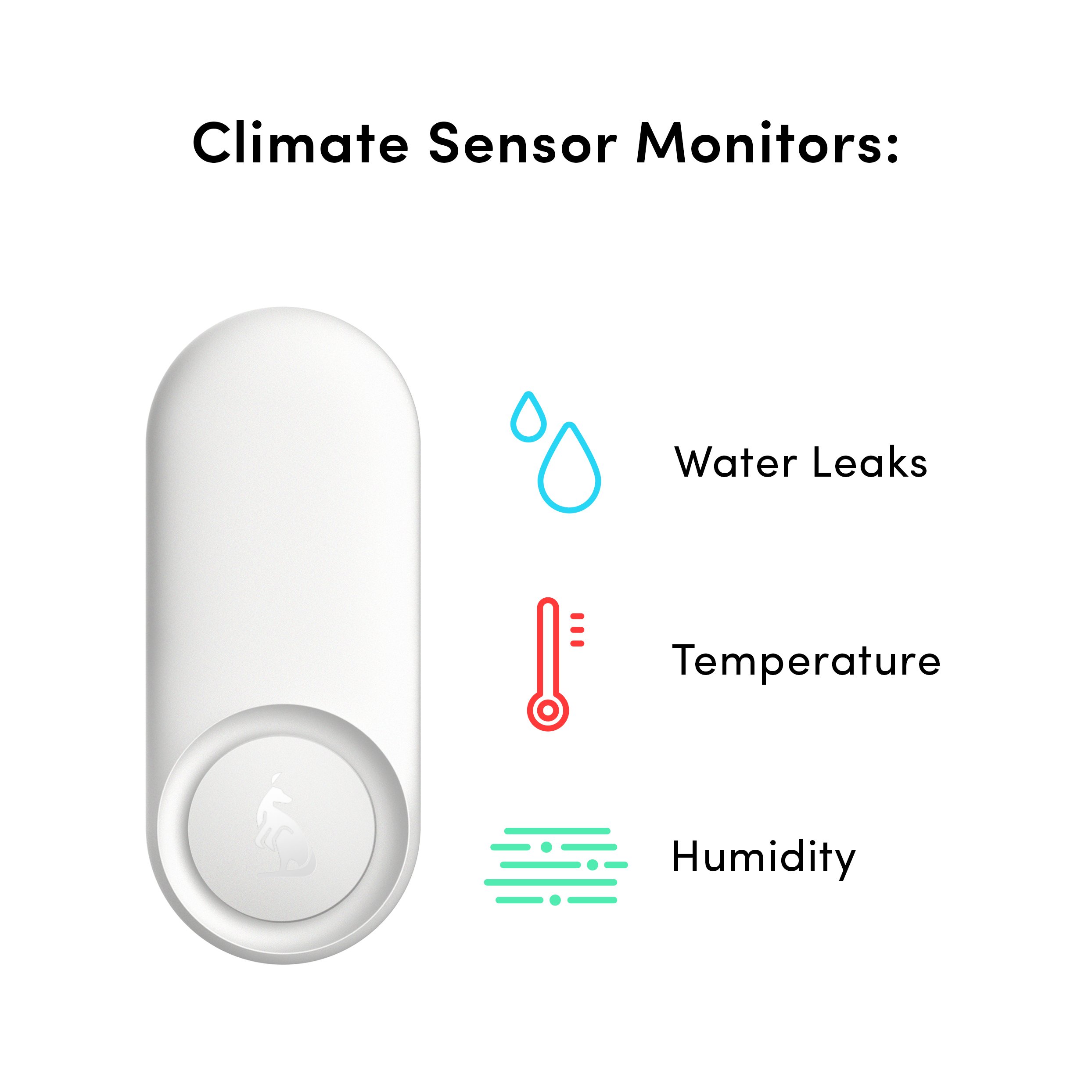Ambient Conditions: the Ideal Temperature for Your Living Space
Finding the ideal room temperature for your home can feel like a constant battle. You crank up the heat to chase away the chills, only to find yourself sweating an hour later. But what if there was a way to achieve a comfortable and healthy living environment without the constant adjustments?
This is where the Kangaroo Water & Climate Sensor comes in. This handy device goes beyond a simple thermometer, offering a holistic view of your home's ambient conditions.
Understanding "Room Temperature"
The term "room temperature" gets tossed around casually, but what exactly does it mean? Unlike a precise measurement on a thermometer, it doesn't denote a single, specific degree. Instead, it encompasses a comfortable range suitable for most occupied spaces. Traditionally, "room temperature" has been understood to be around 20 degrees Celsius (68 degrees Fahrenheit). This range reflects a sweet spot where our bodies can comfortably maintain their internal temperature without feeling excessively hot or cold.
However, the concept of "room temperature" goes beyond a single number. Here's why:
Variability Within the Range: Even within the 20°C (68°F) range, there can be slight variations in what feels comfortable. Some people might prefer a slightly cooler environment around 18°C (64°F) for better sleep, while others might find 22°C (72°F) more comfortable for lounging.
Factors at Play: Several factors influence our perception of "room temperature." Activity level can play a role. Physical exertion generates heat, so a cooler environment might be more comfortable while working out compared to relaxing on the couch. Humidity also comes into play. Higher humidity levels can make a space feel warmer, even at a moderate temperature.
Global Standard: While the concept of "room temperature" exists universally, the specific range for ideal room temperature may vary slightly depending on geographical location and climate. People in warmer climates might be accustomed to a slightly higher "room temperature" than those in cooler regions.
Beyond the Average:
It's important to remember that the "typical" room temperature is just a starting point. Here's why:
Optimal Range: The ideal temperature can vary slightly. Read your thermostat, some people prefer cooler environments around 18 degrees Celsius (64 degrees Fahrenheit) for better sleep, while others might find 22 degrees Celsius (72 degrees Fahrenheit) more comfortable.
Activity Level: Physical activity generates heat. Cooking in a warm kitchen might necessitate a slightly cooler room temperature for overall comfort.
Health Conditions: Certain health conditions can affect temperature sensitivity. For example, individuals with chronic pain might find slightly warmer temperatures more comfortable.
Here's why having more control over your home temperature is essential:
Unparalleled Comfort: Our bodies have a specific ideal temperature range where they thrive. A cooler environment promotes better sleep and focus, while a slightly warmer setting might be ideal for unwinding after a long day. Greater control allows you to personalize the room temperature to your exact needs, creating a truly comfortable haven.
Boosted Productivity: Studies have shown that a slightly cooler environment (around 68-72 degrees Fahrenheit) can significantly improve alertness and cognitive function. This translates to increased productivity during work hours, allowing you to tackle tasks with greater focus and efficiency.
Enhanced Sleep Quality: Our bodies naturally cool down during sleep. A bedroom that's too warm can disrupt this process, leading to restlessness and difficulty falling asleep. Precise temperature control allows you to create the perfect temperature for sleep for deeper, more restorative sleep cycles.
Energy Savings: Heating and cooling systems are significant contributors to your home's energy consumption. By having more granular control over the temperature, you can avoid unnecessary heat and cool cycles, leading to potential energy savings and a smaller carbon footprint.
Personalized Comfort for All: Household members often have varying temperature preferences. Imagine a scenario where someone prefers a cool environment for working from home while another enjoys a slightly warmer setting. Greater control allows you to tailor the temperature to different zones or even individual rooms, ensuring everyone feels comfortable.
The Future is Flexible: Smart home technology offers exciting possibilities for temperature control. Imagine setting schedules that adjust the temperature automatically throughout the day or remotely controlling your smart thermostat from your smartphone. Greater control paves the way for a more responsive and personalized approach to home comfort.
Finding Your Ideal Temperature:
Studies have shown that a temperature range between 68-72 degrees Fahrenheit (20-22 degrees Celsius) is optimal for sleep and overall comfort. However, this can vary depending on individual preferences and activity levels. The Kangaroo Water & Climate Sensor helps you find your sweet spot by:
Monitoring temperature: It tracks the temperature in your home, allowing you to see if it's consistently too hot, too cold, or just right. This functionality pertains to smart thermostats and thermostat setting.
Sending alerts for extremes: Did you accidentally leave a window open on a chilly night? The sensor will notify you if the temperature drops below a pre-set threshold, allowing you to take action before your home becomes uncomfortably cold.
Easy adjustments: With this real-time data, you can fine-tune your thermostat settings to achieve a comfortable and energy-efficient environment.
More Than Just Temperature:
The Kangaroo Water & Climate Sensor goes beyond basic temperature monitoring. It also offers:
Humidity monitoring: Excessive humidity can lead to mold growth and respiratory problems. The sensor keeps an eye on humidity levels, alerting you if they become a concern.
Water leak detection: Unexpected leaks can cause significant damage. The Kangaroo sensor detects water presence, giving you a heads-up before a small leak turns into a major headache.
Explore Related Articles Here
6-ways-to-use-kangaroo-water-climate-sensors
Reducing-moisture-how-to-lower-humidity-at-your-place
Home-essentials-stocking-up-for-peace-of-mind-and-convenience
Simple and Seamless Integration:
The Kangaroo Water & Climate Sensor is designed for ease of use:
Easy installation: No complicated wiring or tools are required. Simply place it on the floor near potential trouble areas like pipes or appliances, or mount it on the wall for a more discreet placement.
Wi-Fi connectivity: The sensor connects directly to your home's Wi-Fi network, eliminating the need for a separate hub.
Mobile app compatibility: Receive alerts and monitor temperature and humidity readings straight from your smartphone through a dedicated app.
The Perfect Chill: Ideal Temperatures for Different Activities
Sweet Dreams for All Ages:
Adults (68-72 degrees Fahrenheit / 20-22 degrees Celsius): For most adults, this range acts as a sweet spot for sleep. It allows your body's internal thermostat to function optimally. During sleep, your body temperature naturally dips slightly. A cooler environment facilitates this process, triggering the release of sleep hormones like melatonin. This, in turn, promotes deeper sleep stages and a more restful night. Additionally, a cooler environment can help prevent night sweats, which can disrupt sleep and leave you feeling restless.
Babies (68-70 degrees Fahrenheit / 20-21 degrees Celsius): Newborns haven't yet fully developed their ability to regulate body temperature. A slightly warmer environment compared to adults is ideal, but overheating is a significant concern. To maintain this comfortable range, dress your baby in lightweight, breathable pajamas made from natural fibers like cotton. Use a single, lightweight blanket to avoid overheating. It's also crucial to ensure proper airflow in the nursery to prevent stagnant air and heat buildup. Always monitor your baby's temperature and adjust clothing or bedding as needed.
Seniors (70-75 degrees Fahrenheit / 21-24 degrees Celsius): As we age, our body's ability to regulate temperature can decline. Seniors may find a slightly warmer sleep environment more comfortable. This is because their bodies may not generate heat as efficiently as they did when younger. However, it's still important to avoid overheating, which can disrupt sleep and lead to dehydration. Opt for breathable sleepwear and lightweight blankets. Consider using a programmable thermostat to automatically adjust the temperature throughout the night, ensuring a comfortable sleep environment.
Pets (Varying based on breed and fur type): Our furry friends have different sleep temperature needs than us. Generally, dogs and cats prefer a warmer environment, between 70-78 degrees Fahrenheit (21-26 degrees Celsius). However, this can vary significantly depending on breed and fur type. Breeds like Huskies and Siberian Cats are adapted to colder climates and may prefer cooler temperatures. Conversely, short-haired breeds or hairless animals may feel the chill more easily and appreciate a slightly warmer environment.
Tips for a Comfortable Sleep Environment:
Invest in a good thermostat: A programmable thermostat allows you to adjust the temperature throughout the night, keeping it cooler initially and gradually warming it up as you approach morning.
Layer your bedding: Sheets, blankets, and comforters provide flexibility to adjust your level of warmth throughout the night.
Consider air circulation: A ceiling fan on low can circulate cool air without creating a draft.
Mind your bedtime routine: Avoid strenuous activity or heavy meals close to bedtime, as these can raise your body temperature and make it harder to fall asleep.
Beyond the Bedroom:
Working From Home (68-72°F / 20-22°C): While staying cozy might seem tempting, a slightly cooler environment can be your secret weapon for productivity. This range helps you stay alert and focused throughout the workday. Avoid letting the temperature dip too low, as that can lead to shivers and discomfort.
Working Out (60-68°F / 15.5-20°C): Exercise generates heat! A cooler environment, around 60-68°F (15.5-20°C), helps regulate your body temperature during a workout. This prevents overheating and allows you to push yourself further without feeling sluggish. Gyms typically maintain a range around 64-70°F (17.8-21.1°C) to accommodate various activity levels and clothing choices.
Cooking (Variable): Focusing on temperature control while cooking might seem counterintuitive, but it's more about managing heat generated by the cooking process itself. Ovens, stoves, and even boiling water can significantly raise the room temperature. Here, prioritize ventilation. Open windows or use exhaust fans to remove heat and moisture, keeping the overall room temperature comfortable.
Studying (68-72°F / 20-22°C): Similar to working from home, a slightly cooler environment can enhance focus and concentration while studying. This range provides comfort for extended periods without inducing drowsiness that can hinder learning. If you find yourself getting sluggish, try a splash of cold water on your face or opening a window for a quick burst of fresh air.
Remember: These are general guidelines. Individual preferences and factors like clothing and bedding can influence your ideal room temperature. Experiment and find what works best for you!










